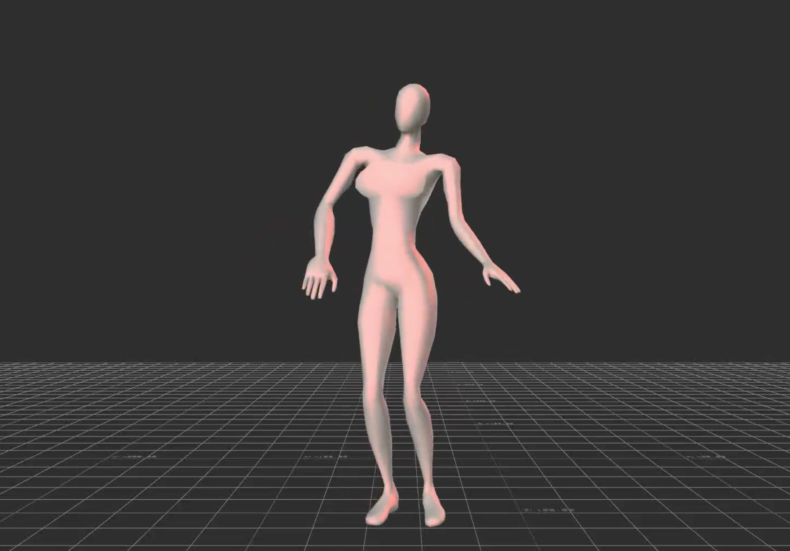
Last week, researchers published a paper about dancing in the journal Scientific Reports. And the internet was really into it. The little dancing lady GIF was all over the place, and Shakira jokes washed over us all. But after I made my own jokes, I had some questions about the study. So, being a journalist, I read it. And hoo boy, does it make a whole lot of assumptions! Let’s talk about them.
Let’s start with the first two sentences of the abstract: “Dance is a universal human behaviour that is observed particularly in courtship contexts, and that provides information that could be useful to potential partners. Here, we use a data-driven approach to pinpoint the movements that discriminate female dance quality.” Oh, so, the paper here isn’t really asking “which woman is a better dancer” but rather “which woman would you rather sleep with?” That is… a completely different question than asking who’s a better dancer.
The study goes on to really solidify this link. “Here, we focus on women’s dance movements. Women dance to entertain men in many cultures. A study in a nightclub found that female dancers were more likely to attract male attention than vice versa, and men pay greater visual attention to attractive than unattractive dancers.”
Okay, so you want to know which dance moves a woman can do that are more likely to attract a straight man. Assuming the woman wants to do that. Which, have you ever met straight men in a setting at which there might be dancing? Like, say, a club? Attracting them is not a desirable outcome, let me tell you.
Anyway, their study did indeed target straight women to do the dancing (39 of them). But were the women told to dance for mates or for friends? Neither, really. “They were asked to dance as if they were dancing to a song in a nightclub,” one of the study’s authors Nick Neave, a researcher at Northumbria University, told me in an email. But the way one dances in a nightclub with friends isn’t going to necessarily the way one dances in a nightclub if they’re hoping to attract a partner.
Then there’s the question of who was rating these dancers, and what they were asked to rate. Attractiveness? Some other measure of quality? According to the paper, they were asked to rank the dancers on a scale of 1-7, where one was “extremely bad dancer” and 7 was “extremely good dancer.” But the “drum rhythm” that the dancers heard was not included for the raters, so if someone was completely off the beat they would never know.
And who exactly did these ratings? “Raters were invited to take part if they were aged 18 or over and were heterosexual,” the study says. And that makes sense — if the study was interested in what makes a dancer more attractive to a heterosexual man, having heterosexual men do the rating is the best choice. But the raters also included heterosexual women — in fact the majority of the people who rated these videos were heterosexual women (143 of them, compared to 57 men).
So we have a group of mostly straight women, watching videos of other straight women dancing, rating them from 1-7. And from those ratings we’re supposed to be able to understand which kinds of dance moves are more attractive… to straight men? Neave told me that the reason they included women in the rating section was because “we are also interested in how females show to other females as potential rivals.” But again, that assumes that the women in the study were going into this task assuming that they were dancing and rating other dancers in a “mate attraction/rival intimidation” setting.
And indeed they found that the men and women who rated these dancers didn’t always agree. Women, for example, enjoyed hip swinging more than men (my ladies, please enjoy this incredibly impressive video). Men seemed to enjoy arm movement more than women (and for you, I have this incredible Vogue performance).
Here’s a confession: I love watching people dance. I have spent so many hours down deep, deep YouTube rabbit holes, watching all kinds of dancers doing all kinds of things.
Here’s one of my favorites, from a choreographer who goes by WilldaBeast Adams.
But I’ll also spend hours watching Vogue performances like this:
This probably wouldn’t rate well on their 1-7 scale but tell me this isn’t incredibly sexy:
And have you seen Flex Is Kings? You should.
Anyway, this is all to make an incredibly obvious point: A “good” dancer might not be an “attractive” dancer. And “attractive” might be different based on where you are. All of the people involved in the study were based in the northwest England. Try these moves in a club somewhere else, and they might not go over as well.
This doesn’t even get into the fact that this lab doesn’t have the best track record on this topic. As reporter Dan Engber pointed out on Twitter, last time it was what makes men good dancers. And Engber’s reporting uncovered that that study was a pretty good example of shoddy statistics.
All this is to say: dance however you want and don’t let suspect science tell you nothing. Also, always read the paper.
Another example of good but unattractive dancing. But I love it: https://www.youtube.com/watch?v=KWZGAExj-es